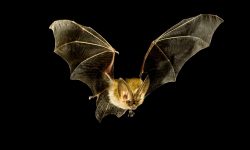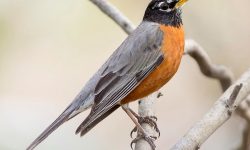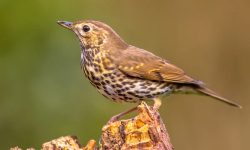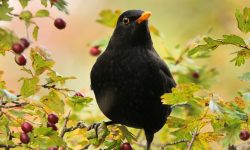Ravens are among the most captivating and mysterious birds in the world. Known for their exceptional intelligence, deep black plumage, and rich history in mythology, they have fascinated humanity for centuries. You might have seen them flying alone or gathered in groups, prompting the question: what is a group of ravens called?
In this article, we’ll explore the answer, dive deep into its origins, and uncover the profound symbolism behind ravens. Prepare to enter the spellbinding world of these remarkable birds!
What Is a Group of Ravens Called?
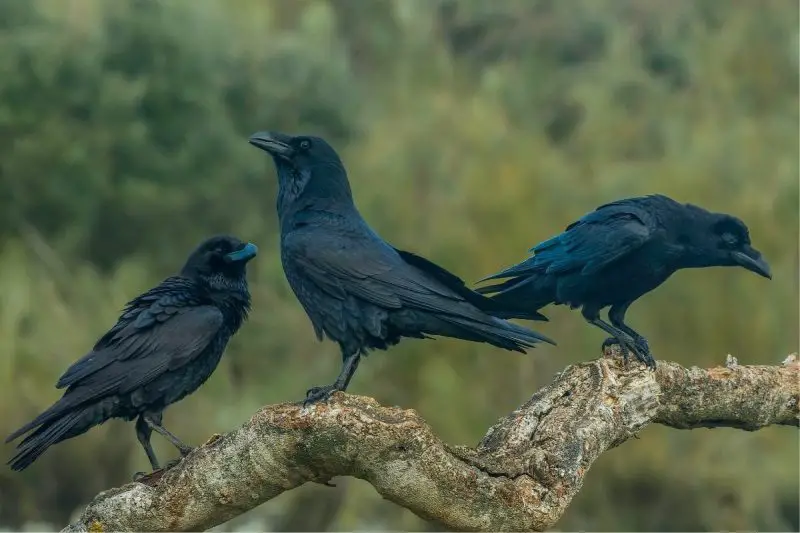
A group of ravens is most commonly referred to as an “unkindness” or sometimes a “conspiracy.” These terms, full of mystery and dark allure, fit perfectly with the raven’s traditional associations with prophecy, death, and the supernatural.
The use of such terms reflects how humans have long perceived ravens: as wise, secretive, and sometimes ominous creatures. Unlike many bird species, ravens possess a depth of symbolic and cultural importance that is almost unparalleled.
Origins of the Term “Unkindness of Ravens”
The term “unkindness of ravens” likely originated during the Middle Ages, around the same time collective nouns known as “terms of venery” became popular among English aristocracy and hunters. These names were often poetically descriptive, painting vivid pictures based on the animals’ perceived characteristics.
An “unkindness” may have been attributed to ravens due to their reputation for scavenging and their frequent appearances on battlefields and other places of death. Their eerie calls and jet-black feathers only added to their ominous image.
Other Terms for a Group of Ravens
Besides “unkindness” and “conspiracy,” a group of ravens may also be referred to as:
-
A flock (neutral, scientific usage)
-
A treachery (less commonly used)
-
A storytelling (rare, poetic term emphasizing their vocalizations)
Each of these terms highlights a different aspect of the raven’s unique nature, from their supposed deceitfulness to their extraordinary ability to communicate.
Why Are Ravens Associated with Darkness and Mystery?
Ravens have been associated with dark themes and the mystical world across numerous cultures. Their black feathers, scavenging behavior, and haunting calls easily led ancient peoples to link them with death and the unknown.
However, not all associations are negative. In many myths, ravens are seen as wise, resourceful, and prophetic creatures capable of guiding souls, delivering divine messages, and offering protection.
Ravens in Mythology and Folklore
-
Norse Mythology: Huginn (Thought) and Muninn (Memory) were two ravens who served Odin, the all-father god. They flew across the world each day to bring back information, symbolizing the raven’s connection to wisdom and knowledge.
-
Native American Traditions: Many tribes, especially in the Pacific Northwest, regard the raven as a creator and trickster figure. The raven brought light to the world and is a central figure in their origin stories.
-
Celtic Lore: The raven is closely associated with the battlefield goddess Morrigan, who could transform into a raven to oversee battles and determine the fate of warriors.
These legends established the raven as a symbol of transformation, power, and deep spiritual knowledge.
Incredible Facts About Ravens and Their Groups
Beyond their symbolic significance, ravens are remarkable for their intelligence, social behaviors, and adaptability.
Ravens Are Among the Smartest Birds
Ravens demonstrate complex problem-solving skills, the use of tools, and even planning for future events—capabilities once thought unique to humans and great apes. They can solve puzzles, recognize themselves in mirrors, and show empathy toward each other.
In groups, ravens form intricate social bonds and hierarchies. Young ravens often form what are called “non-breeding flocks,” where they socialize and establish relationships before pairing off to mate.
Complex Communication Among Ravens
Ravens have a sophisticated system of communication that includes a wide range of calls, gestures, and even facial expressions. Researchers have discovered that ravens can use their beaks similarly to a human pointing finger to draw attention to objects or events.
This level of communication hints at their high emotional intelligence and deep social complexity within groups or “unkindnesses.”
How Large Can a Group of Ravens Be?
While ravens are often seen alone or in pairs, especially during the breeding season, they can form larger groups when food is plentiful or during the non-breeding season. These groups can range from small gatherings of six to eight individuals to much larger flocks of several dozen birds.
When resources are abundant, or during harsh winters, communal roosts can contain up to several hundred ravens.
Symbolism of an Unkindness of Ravens
The appearance of an unkindness of ravens often carries rich symbolic meaning. Different cultures interpret this phenomenon in various ways, but common themes include transformation, prophecy, death, and wisdom.
Positive Symbolism
Not all symbolism surrounding ravens is foreboding. Positive associations include:
-
Wisdom and knowledge
-
Protection and guardianship
-
Spiritual insight and prophecy
-
Transformation and rebirth
In many indigenous cultures, encountering a raven—or a group of them—can be a sign that a major personal transformation is on the horizon or that hidden knowledge will soon be revealed.
Negative Symbolism
Historically, the gathering of ravens has also been linked to darker omens:
-
Forewarning of death
-
Portents of war or misfortune
-
Deception or betrayal
This duality—raven as both a guide and a harbinger of doom—makes them endlessly fascinating figures in mythology and literature.
Where Are Ravens Found?
Ravens boast an impressive global range. The Common Raven (Corvus corax), the most widespread species, inhabits the Northern Hemisphere, including parts of North America, Europe, North Africa, and Asia.
Types of Ravens
Some notable raven species include:
-
Common Raven (Corvus corax): The largest and most widespread.
-
Chihuahuan Raven (Corvus cryptoleucus): Found in the southwestern United States and Mexico.
-
Australian Raven (Corvus coronoides): Native to Australia, known for its unique calls.
Each of these species has adapted to different habitats, from tundra to desert to mountain forests.
Ravens’ Adaptability
Ravens are highly adaptable, thriving in a variety of environments, including rural countryside, mountainous regions, and even urban areas. Their intelligence and omnivorous diet allow them to exploit many food sources, from roadkill to crops to garbage.
This adaptability has enabled ravens to survive and even flourish in regions where other bird species have struggled.
How Scientists Study Ravens
Understanding the behavior of ravens requires innovative research methods, given their intelligence and wariness.
Tracking and Behavioral Studies
Researchers use:
-
Radio telemetry to track movements.
-
Observational studies to record social interactions and communication.
-
Puzzle-based experiments to study cognitive abilities.
Such studies have revealed extraordinary feats, including ravens’ abilities to plan for future needs—a skill once thought exclusive to humans.
Ethical Considerations
Given the raven’s complex emotional life, scientists prioritize minimizing stress and disruption when conducting research. Ethical standards include habitat preservation, non-invasive tracking methods, and long-term population monitoring.
Ravens in Popular Culture
Ravens have left an indelible mark on human culture, appearing in everything from ancient mythology to modern literature and media.
Ravens in Literature
-
Edgar Allan Poe’s “The Raven”: Perhaps the most famous literary raven, symbolizing grief, madness, and the supernatural.
-
George R.R. Martin’s “A Song of Ice and Fire” series: Ravens are used as messengers between castles, reflecting their mythological role as conveyors of knowledge.
-
William Shakespeare: Frequently referenced ravens in his plays, often as omens of doom.
Ravens in Movies and Television
-
Game of Thrones: The Three-Eyed Raven represents foresight, prophecy, and deep wisdom.
-
The Crow: While focusing on a different bird, it draws heavily from raven and crow symbolism.
-
The Secret of NIMH: Features a comical but wise raven character, reflecting both the bird’s intelligence and humor.
Modern Symbolism
In contemporary symbolism, ravens often represent resilience, personal transformation, and insight into hidden truths. They are frequently used in tattoos, art, and spiritual practices.
Fun Facts About Ravens
Here are some mind-blowing facts about ravens:
-
They can mimic human speech: Some captive ravens have demonstrated the ability to speak words as clearly as parrots.
-
They play: Ravens have been observed engaging in aerial acrobatics, sliding down snowy hills, and playing games with each other and with wolves.
-
They mourn their dead: Ravens have been observed gathering around deceased companions, engaging in behaviors interpreted as mourning rituals.
These behaviors highlight just how emotionally complex and socially intricate ravens truly are.
Conclusion: Unkindness, Conspiracy, and More
So, what is a group of ravens called? An unkindness, a conspiracy, or simply a flock—each term captures a piece of the raven’s deep, mysterious allure.
Ravens have fascinated humanity for millennia, symbolizing death and rebirth, deception and wisdom, endings and new beginnings. A group of these birds is not just a collection of dark wings; it is a living, breathing embodiment of intelligence, social connection, and profound mystery.
The next time you see an unkindness of ravens soaring across the sky or perching silently in a tree, pause for a moment. You are witnessing one of nature’s most enigmatic and extraordinary creatures at work—keepers of ancient knowledge, storytellers of the wild.

